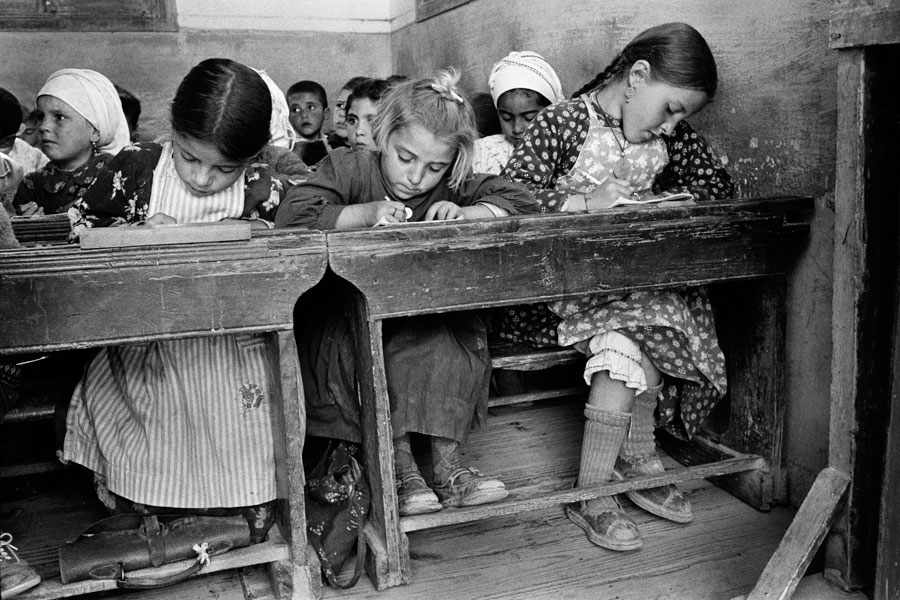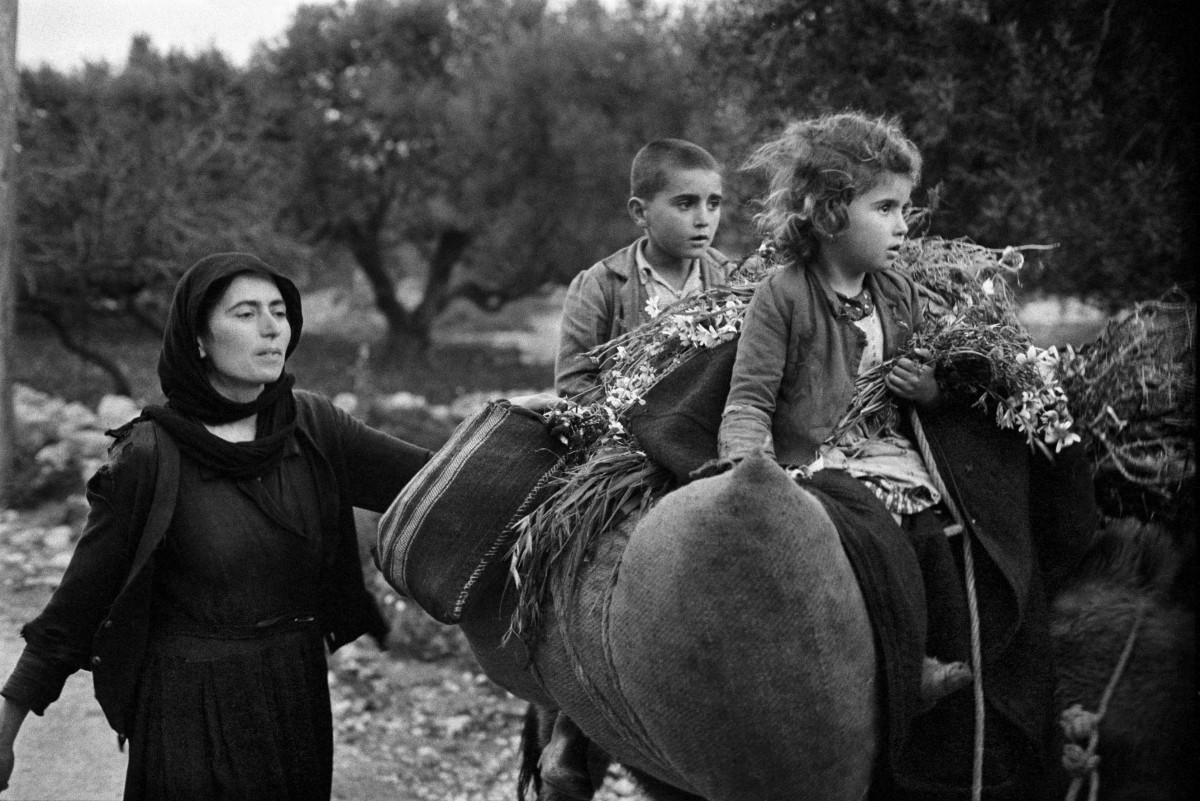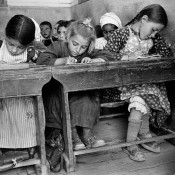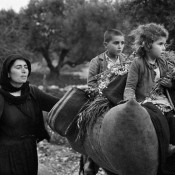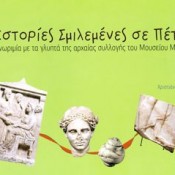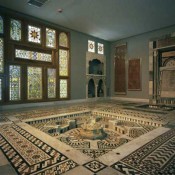The Benaki Museum in honor of the great photographer Constantine Manos presents an exhibition-tribute to his multi-awarded A Greek Portfolio.
Childhood experiences are deeply affecting and can, at times, direct us to a voyage of discovery in later life. For Constanine Manos, it was the stories of his parents’ lost Eden on the island of Afisia in the Sea of Marmara that fired his imagination. It was a life they lost, along with all their belongings, in the exchange of populations between Greece and Turkey in 1923. As immigrants to the U.S. his parents’ longing for their past village life prompted him to travel, discover and record the rural life of Greece in the early 1960’s.
What initially may have been a nostalgic and perhaps even a romantic notion of a return to his family’s roots lead Manos to the remote villages and islands of Greece to confront a reality of poverty, isolation, and age old, ingrained, traditions. He followed the unchanging cycles of toil, hardship, joy, celebration, and the rituals of departure and through these wove a tapestry of warm humanity and benighted solace. It is a poetic transformation of the daily, and at times harsh, existence into images of magical moments. With introspection and humility he allows his protagonists to disclose themselves, and through the timing of the shutter and his classical compositions he leads us to truths, and meanings that are universal.
His approach is so refined and subtle that many people stay only at the surface of the ethnographic aspect of the work. And while that, with time, will prove valuable, it remains as the outer clothing of the soul of a people whose perseverance, pride, dignity, and core values are revealed. With what utter simplicity and lack of artifice Manos exposes human complexity!
It is, of course, in the humanistic photographic tradition of Henri Cartier-Bresson that Manos functions. He brings to each image a myriad of connotations and unique details to each remote area of the country. He shows us how these peoples, of the sea and of the land, struggle within the environment that is their particular destiny. While at the same time closing, in prints of great beauty, the chapter of rural life in Greece.
There is a unique opportunity, here, in this celebration of Constantine Manos’ 50 years of the “Greek Portfolio”. This exhibition provides the public, along with the famous images of the book, the rare chance to see the wide range of images that were edited out of the book by the photographer, but whose variety and depth are truly impressive.
Capturing the one magical moment in a single image is crucial and critical for every photographer. The editing and choice of which image tells its story best is equally important. Thus the full disclosure of images taken, provide us with a fuller understanding of the photographer’s process of selection and his method of working and thinking.
In this way Manos has not only made an invaluable donation to the Benaki Museum, but has with an open heart given us a vision of what we, as a rural nation, once were.
John Demos is the curator of the exhibition.
The exhibit
In the first section of the exhibit a series of original prints from the images that Manos himself selected in 1972 for the book is presented. In the second section, the images were chosen from 219 original prints that the artist recently donated to the Photographic Archive of the Benaki Museum and which were not included in the layout of A Greek Portfolio. These two sections interact with each other, since in their totality they present a worthwhile sample of Manos’ artistic intent. Although they have not had the same exposure, these images that are revealed by Manos for the first time reflect, in no small part due to his poetic abilities, the uniqueness of the land and its inhabitants. The manner in which he approaches his subjects stands out from the prevailing photographic trends of that time, and it operates as a starting point for new photographers as they attempt to capture the Greek countryside.
The photographer
Constantine Manos was born in Columbia, South Carolina, U.S.A., of Greek immigrant parents. His photographic career began in the school camera club at the age of thirteen, and within several years he was a working professional. While at the university Manos discovered Henri Cartier-Bresson and his work. Having found his mentor, he immediately acquired his first Leica, with which he made his first serious pictures on a small island off the coast of South Carolina inhabited by descendants of plantation slaves. At the age of nineteen he was hired as the official photographer of the Boston Symphony Orchestra at Tanglewood, the home of it’s summer festival. His connection with the orchestra would ultimately lead to his first book Portrait of A Symphony, published in 1961 and photographed entirely in Symphony Hall during live concerts and rehearsals.
Graduating from the University of South Carolina with a B. A. in English Literature in 1954, Manos joined the U. S. Army for his compulsory two-year’s of duty. Following his military service he moved to New York, where he worked for Esquire, Life, and Look. From 1961 through 1963 Manos lived in Greece, where he made the photographs for his book A Greek Portfolio – first published in 1972. The book won awards at Arles and at the Leipzig Book Fair. A new edition of the book was published in 1999, accompanied by a major exhibition at the Benaki Museum in Athens. Concurrent exhibitions of pictures from A Greek Portfolio were held at the Art Institute of Chicago, the Bibliotheque Nationale in Paris, and other venues.
Returning from Greece, Manos settled in Boston and completed many assignments for Time-Life books, including their book on Athens. In 1974 he was the chief photographer for Where’s Boston?, a multimedia production that documented the city on the 200th anniversary of American Independence from England and provided photographs for his book Bostonians and a large outdoor exhibition of 152 pictures which captured in black and white the richness and variety of the citizens of that city.
In late 1963 Manos joined Magnum Photos. His photographs are in the permanent collections of the Museum of Modern Art in New York, the Museum of Fine Arts in Boston, the Art Institute of Chicago, the Museum of Fine Arts in Houston, the Bibliotheque Nationale in Paris, the Chrysler Museum of Art in Norfolk, the George Eastman House in Rochester, the High Museum of Art in Atlanta, and the Benaki Museum in Athens.
In 1982 Manos switched his personal work from black and white to color. Work from Manos’ ongoing color project first appeared in his book American Color, published in 1995. In 2000 his book American Color 2, a continuation of his color work in the U. S., was published. In 2003 Manos was awarded the Leica Medal of Excellence for his color from a worldwide field of 250 entrants.
Constantine Manos presents his work
On Wednesday May 22 at 17.30, at the Benaki Museum (Pireos Street Annexe) Constantine Manos will present a slide show with the entire oeuvre.
He will discuss his first professional activity as official photographer of the Boston Symphony Orchestra in 1961; his later collaborations with Esquire, Life and Look, as well as the multimedia application Where’s Boston?, which led to the publication of the book Bostonians in 1974. He will discuss at length the voyages he undertook to Greece in the nineteen sixties and his multiple-award-winning work, A Greek Portfolio. Manos’s talk will close with a presentation of his current work-in-progress, entitled American Color.
At the end of the event the photographer will sign the final copies of A Greek Portfolio (W. W. Norton & Co. Edition, 1999), which will be available for sale from the Benaki Museum Shops.
Guided tours
By the photographer: Friday 24 May 2013 at 12.00; Thursday 30 May 2013 at 18.00
By the curators of the Photographic Archive of the Benaki Museum: Thursday June 6 at 12.00; Thursday June 13 at 12.00; Thursday June 20 at 12.00; Thursday June 27 at 12.00
Where and when
Benaki Museum, main building, 1 Koumbari St. & Vas. Sofias Ave. Duration of the exhibition: May 22 – August 25, 2013
Working hours: Wednesday, Friday: 9:00 – 17:00
Thursday, Saturday: 9.00 – 24.00
Sunday: 9:00 – 15:00
